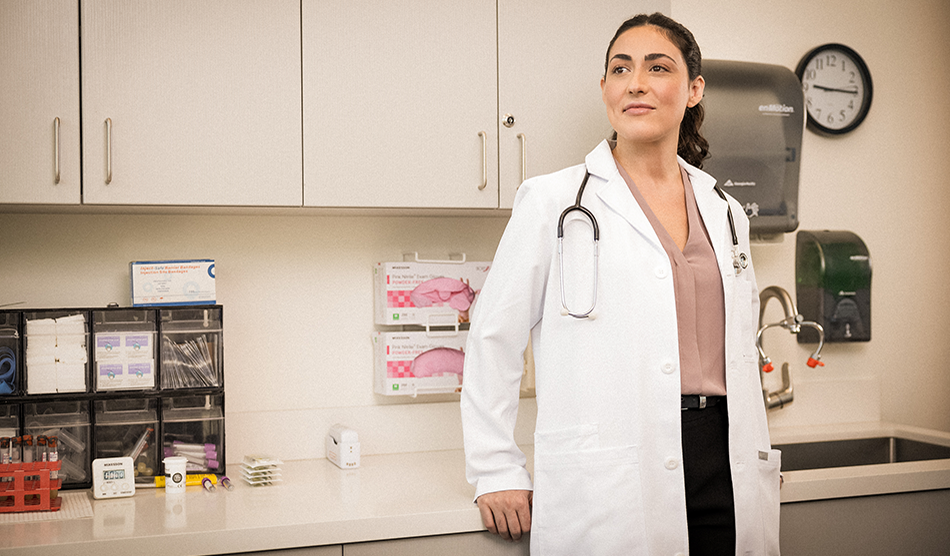Patient experience is at the top of the list for most healthcare organizations, and rightly so. Not only because higher patient satisfaction scores can affect your hospital ratings, but because greater patient loyalty will result in higher patient lifetime value. Here are five ways healthcare facilities can improve the patient experience along with recommendations on how to implement them in your organization.
1. Focus on the overall patient experience
Research shows that patients’ perception of the quality of care is affected more by the overall experience than the actual quality of medical care. From the moment they enter the door to the moment they are discharged, people are judging the totality of their experience. If an individual feels the overall experience is less than stellar, then that disappointment can overshadow positives in clinical care.
Patient satisfaction recommendation: Patient engagement expert Marie Ennis O’Connor advises health organizations to view healthcare as a series of experiences building upon each other instead of various functions operating in silos. Plus, patients want to see their healthcare team communicating with each other, which lessens confusion for them and families. Clear communication with locum tenens providers is important as well. It will help them acclimatize to a new setting more quickly and better support the permanent staff in providing uninterrupted patient care.
2. Create a positive virtual experience
COVID-19 forced healthcare facilities to adapt to the “new normal” in their delivery of healthcare, including expanding telehealth services. Many clinicians were also forced to change how and where they saw patients and had to learn how to care for patients virtually.
Kristin Baird, president and CEO of healthcare management consulting firm Baird Group, says a good patient experience with telehealth is more than just having technology that works. It’s about making patients comfortable no matter how they are seen, whether in-person or virtually.
Patient satisfaction recommendation: Train your clinicians to have what Baird calls good “webside” manner. This means telling patients what you’re doing while you’re doing it and then summarizing what you did at the end. “Use open-ended questions, look at the camera, thank them for asking questions,” Baird says. “Then it’s a more seamless conversation and results in a more positive patient experience.”

3. Help patients feel safe
Along with adjusting to the method of delivery of care, facilities also need to ensure their high safety standards are clearly communicated to patients, especially in the wake of the pandemic. Melissa Love, vice president of professional staff services and human resources at Ochsner Health, says Ochsner started weekly “COVID huddles” where part of their focus was ensuring their stringent cleanliness and safety precautions were visible to patients. “There’s always an assumption when you go to a hospital or clinic that it’s clean, but what are the visible cues to make sure people are aware and understand all of the efforts that are being done to protect them?” Love says.
Patient satisfaction recommendation: Have clear signage that communicates to patients what you’re doing to keep your facility clean and safe. Love says Ochsner has banners outside of and throughout their facilities to ensure patients know they’ll be safe. “We’ve also been doing a lot of frontloaded education and communication, so patients and their families are comfortable, and they know we’re doing everything to ensure a clean and safe environment.”
4. Offer walk-in appointments if possible
A recent Advisory Board survey on primary care consumer preferences found that patients rank walk-in appointments and being seen within the hour as the number one attribute they’re looking for when seeking primary care. Number two is the ability to get a same-day appointment. A distant third is having on site lab and X-ray.
Patient satisfaction recommendation: Consider a daily schedule that accommodates patients seeking on-demand access to care, such as those who need to be seen the same day for things like minor sprains, fever, or rash. This will go a long way in patient retention and a positive patient experience.
5. Collect timely patient feedback and use it
Knowing where improvements need to be made and getting feedback as soon as possible after a patient visit will go a long way in improving the patient experience. Patty Riskind, head of global healthcare at Qualtrics, says Qualtrics recommends asking questions that are relevant in the moment so you can respond effectively and appropriately. “The intent is to create a mechanism that empowers continuous improvement and continuous change that powers improvement.”
Patient satisfaction recommendation: Use transactional and relationship surveys to capture your patients’ feedback about their experience as soon as possible following their appointment. These surveys provide valuable information and insights that will allow you to respond to patient needs quickly. Then use the feedback you receive to improve the overall patient experience.
Improving the patient experience takes time and patience, but even small improvements will make a big difference to those you serve.
Weatherby Healthcare can provide quality locum tenens physicians, PAs, and NPs to provide coverage at your healthcare facility. Give us a call at 954.343.3050 to learn more.



